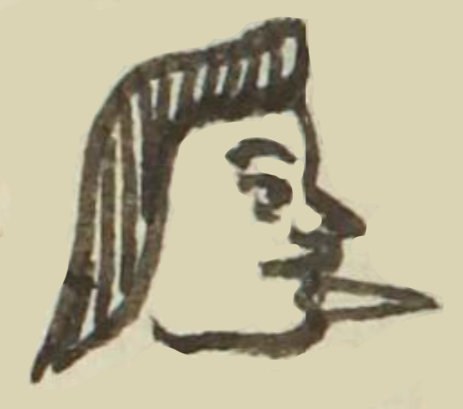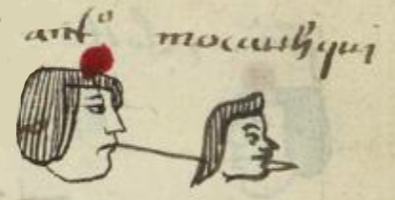Mocauhqui (MH836r)
This black-line drawing of the simplex glyph for the personal name Mocauhqui (either ”Married Man” or "Left/Abandoned") is attested here as a man’s name. The glyph shows the head of a man in a profile view, facing the viewer’s right. His hair is slightly long on his neck, and he has a sharp, pointed labret or lip ornament protruding forward from his chin.
Stephanie Wood
Three other Mocauhqui glyphs all show men wearing European-style hats. This one is very different. Alonso de Molina's translation for mocauhqui is "casado," but Rémi Siméon (1977, 282) gives "dejado, abandonado." The verb cahua fits this latter translation somewhat better.
Stephanie Wood
anto mocauhqui
Antonio Mocauhqui
Stephanie Wood
1560
Jeff Haskett-Wood
casados, abandonados, dejados, bezotes, nombres de hombres

mocauhqui, a married person, https://nahuatl.wired-humanities.org/content/mocauhqui
Hombre Casado o Abandonado/Dejado
Stephanie Wood
Matrícula de Huexotzinco, folio 836r, World Digital Library, https://www.loc.gov/resource/gdcwdl.wdl_15282/?sp=746&st=image.
This manuscript is hosted by the Library of Congress and the World Digital Library; used here with the Creative Commons, “Attribution-NonCommercial-ShareAlike 3.0 License” (CC-BY-NC-SAq 3.0).








